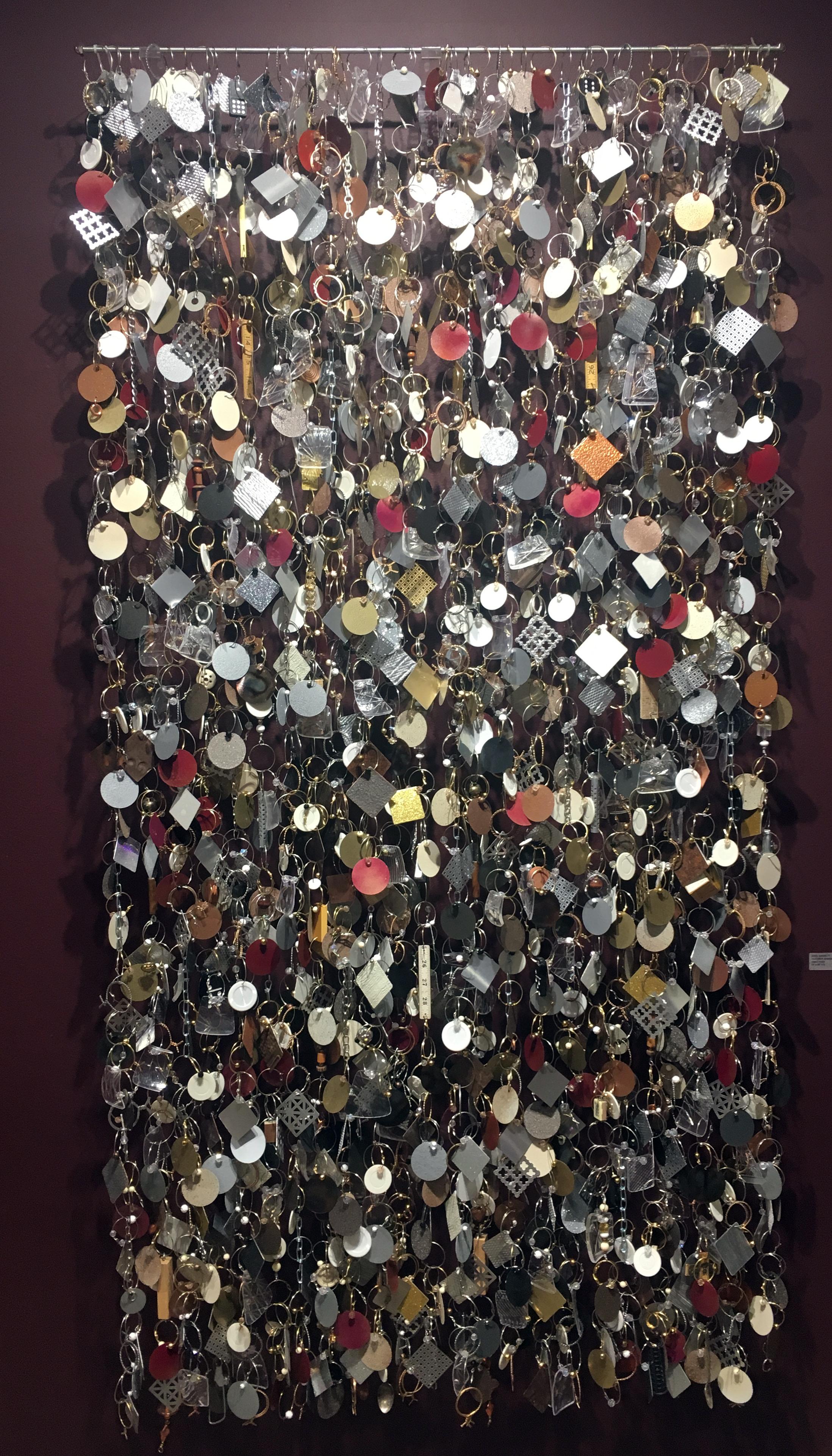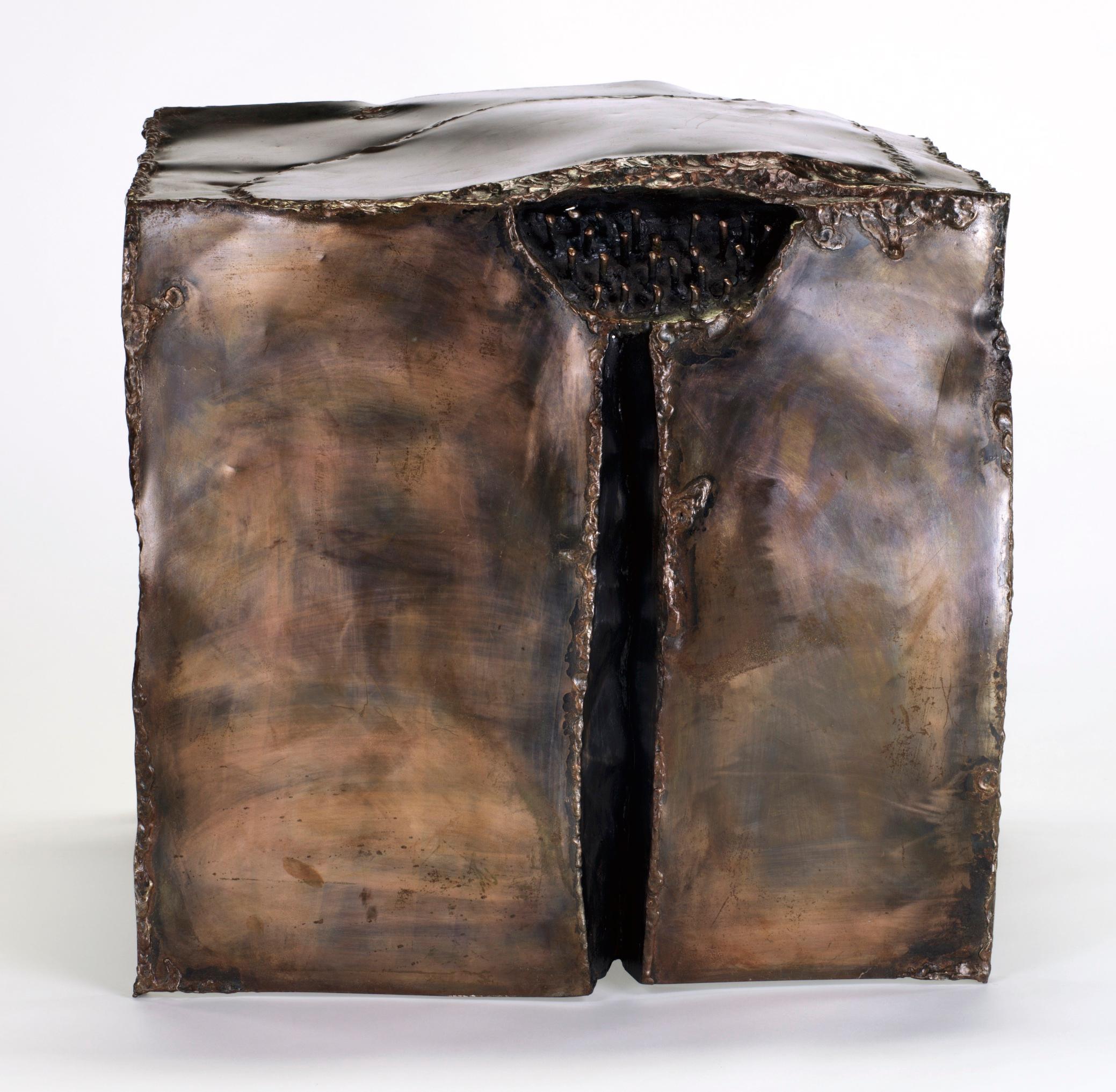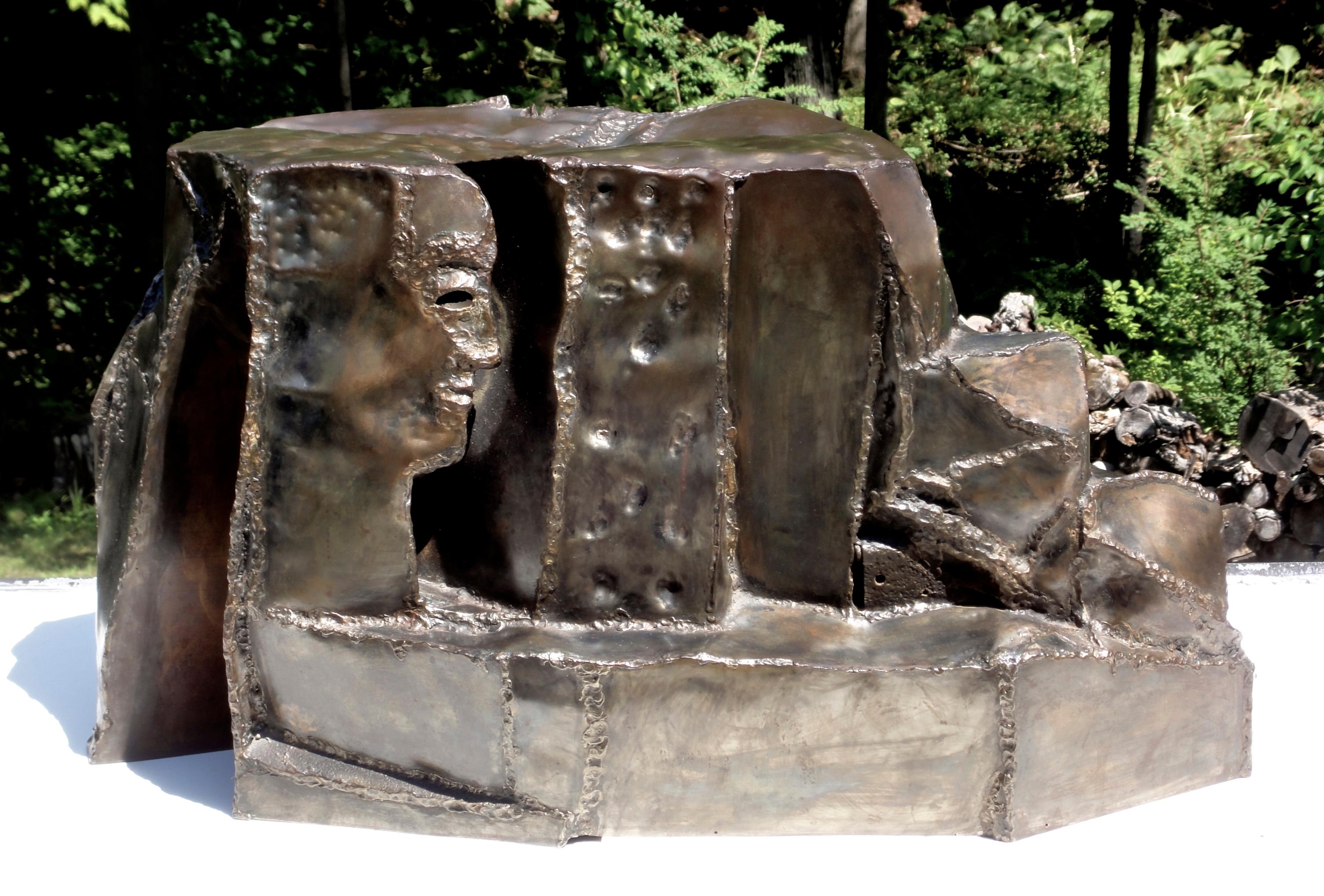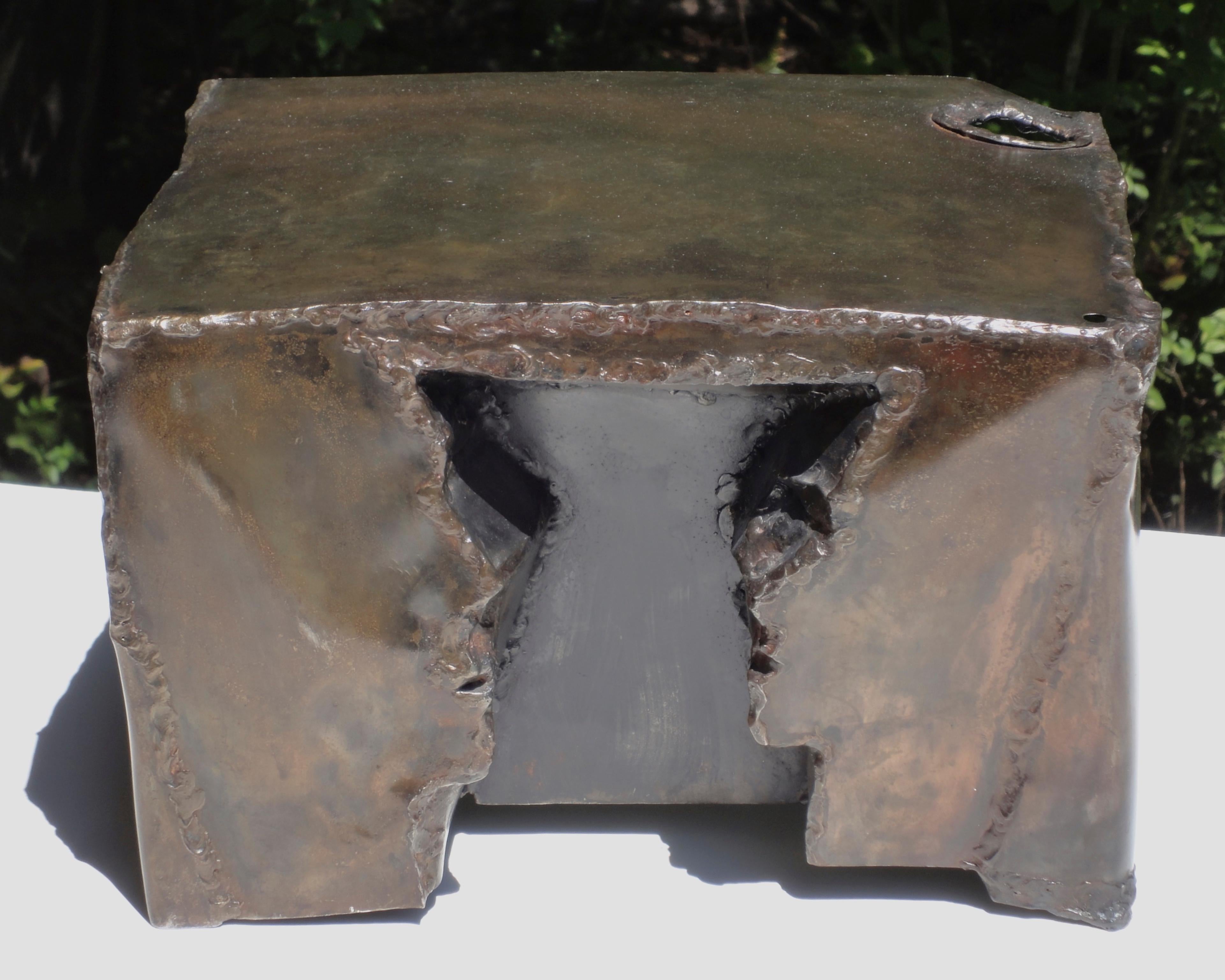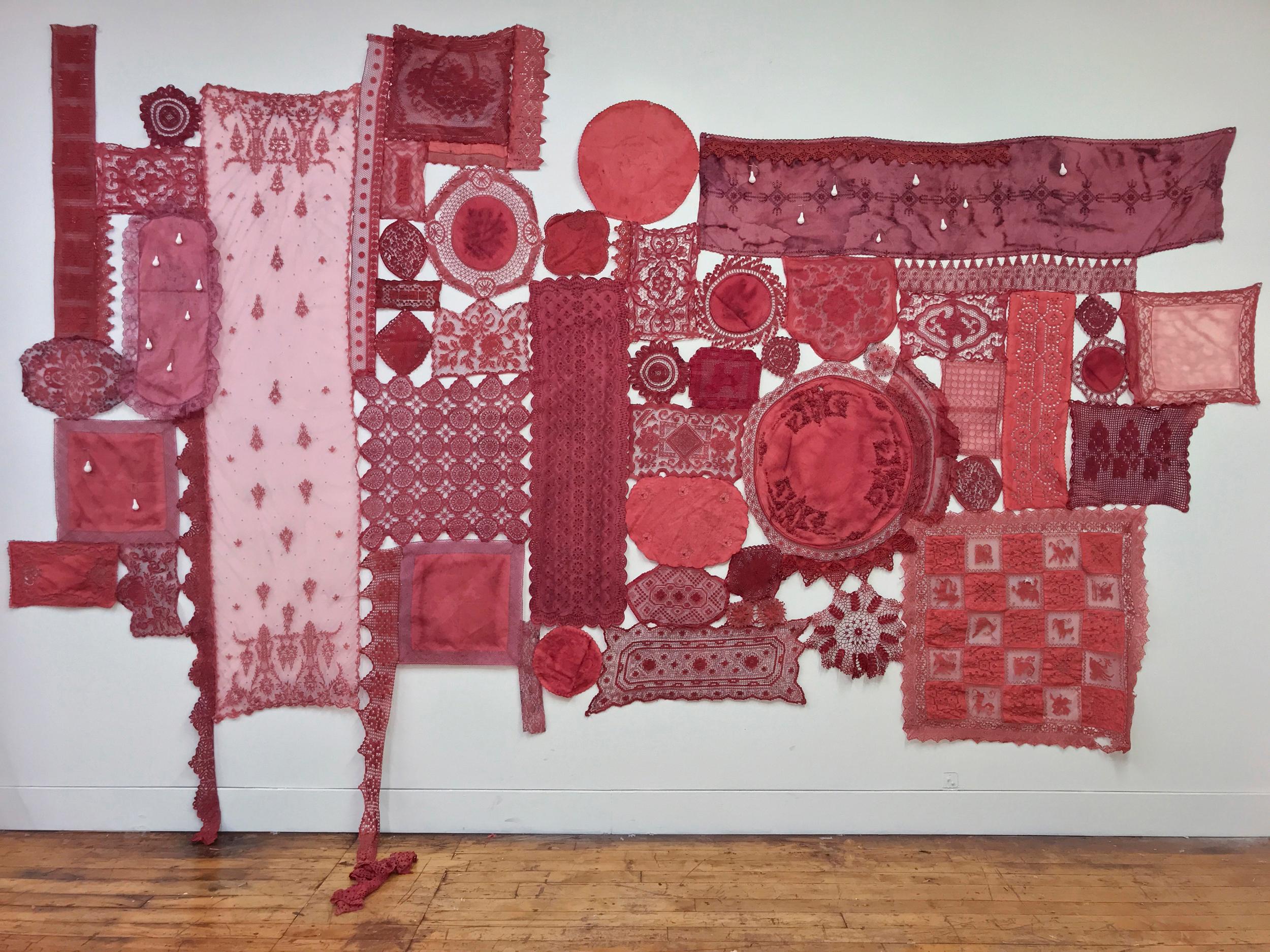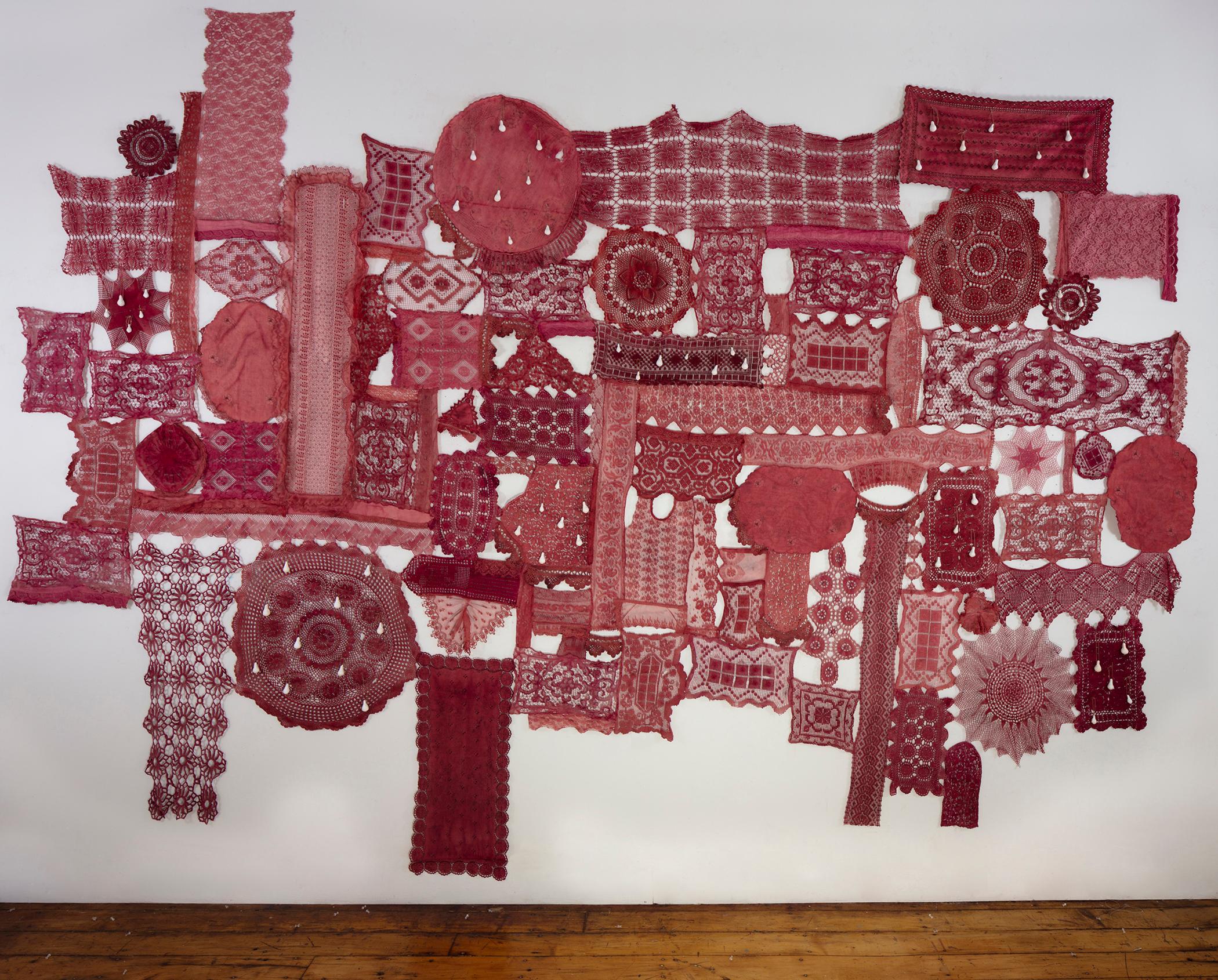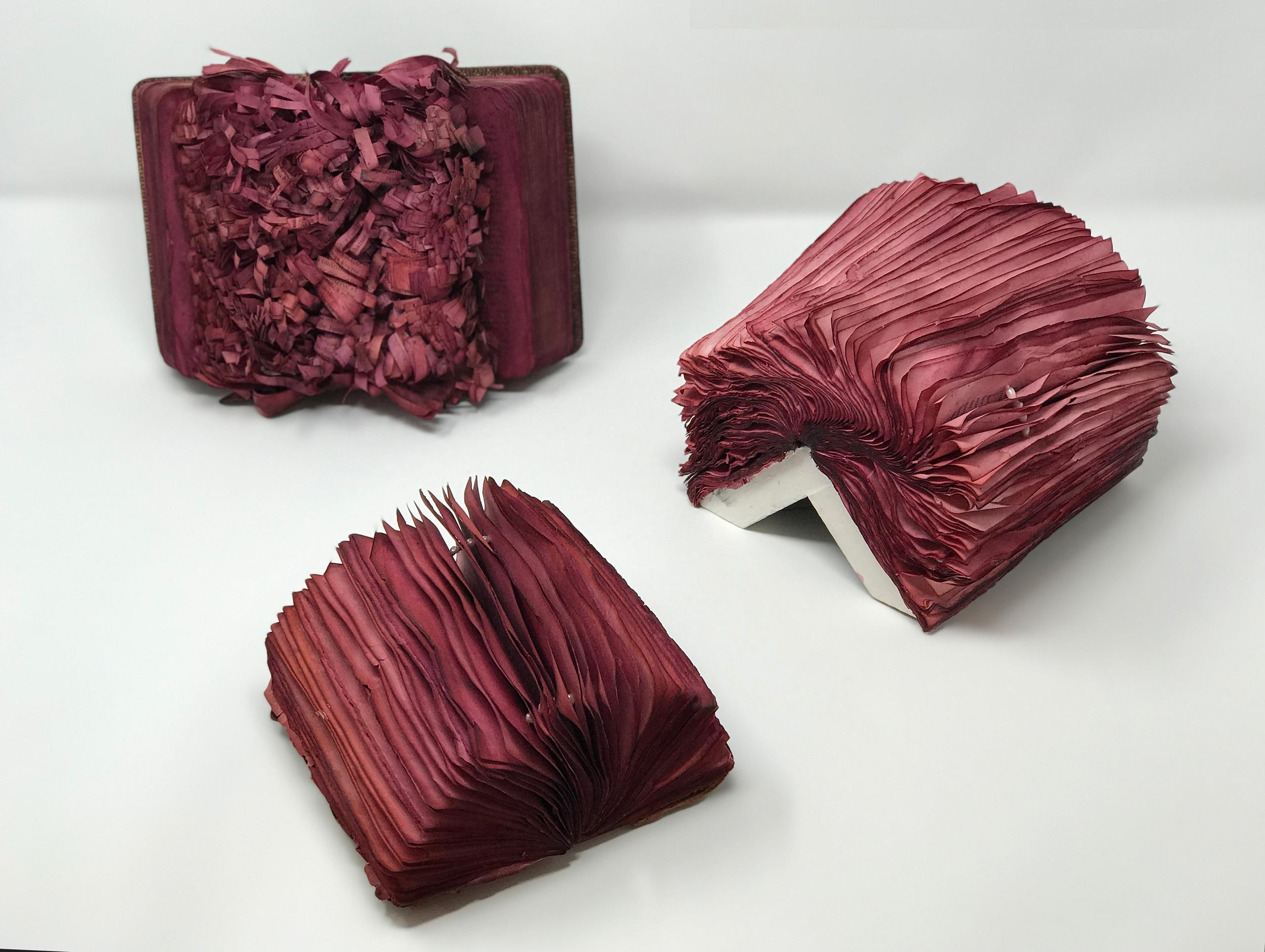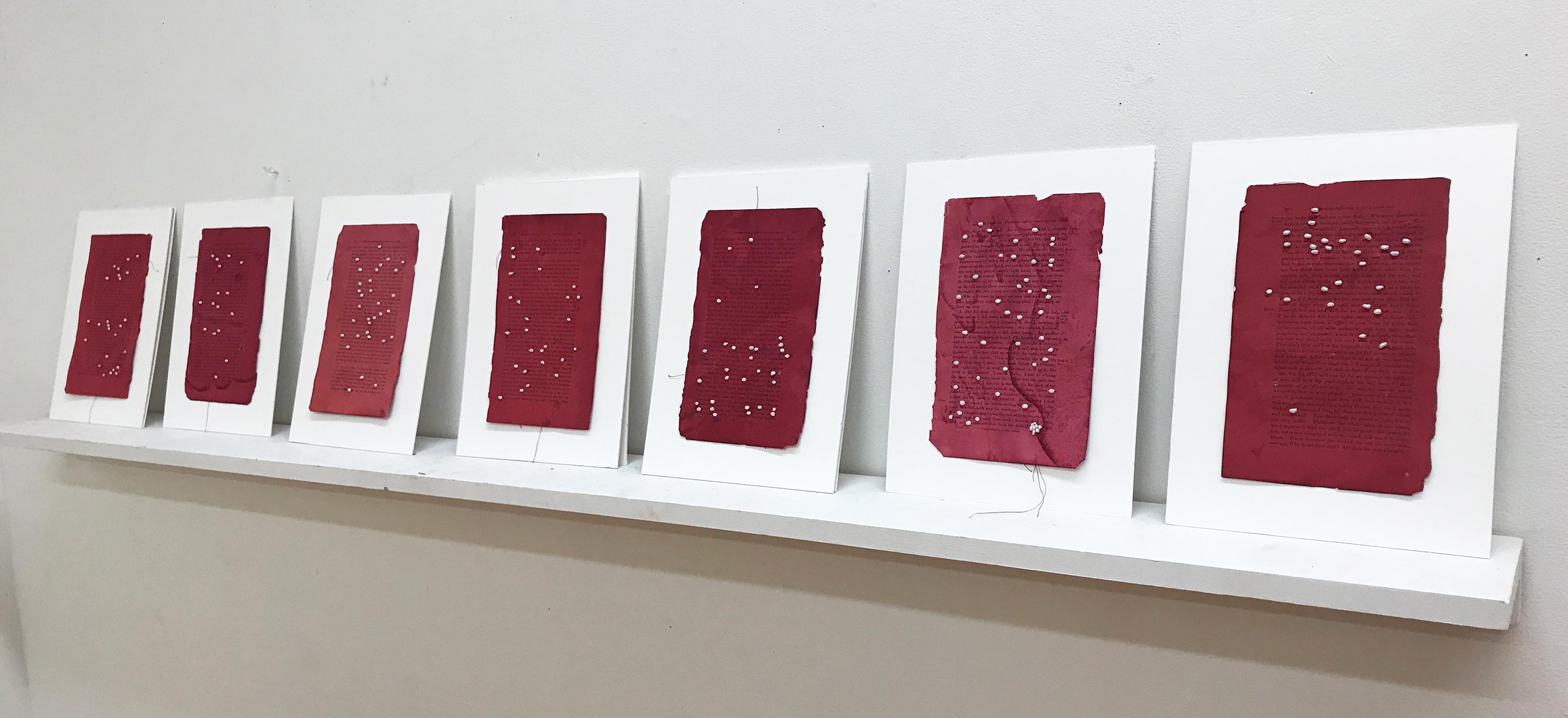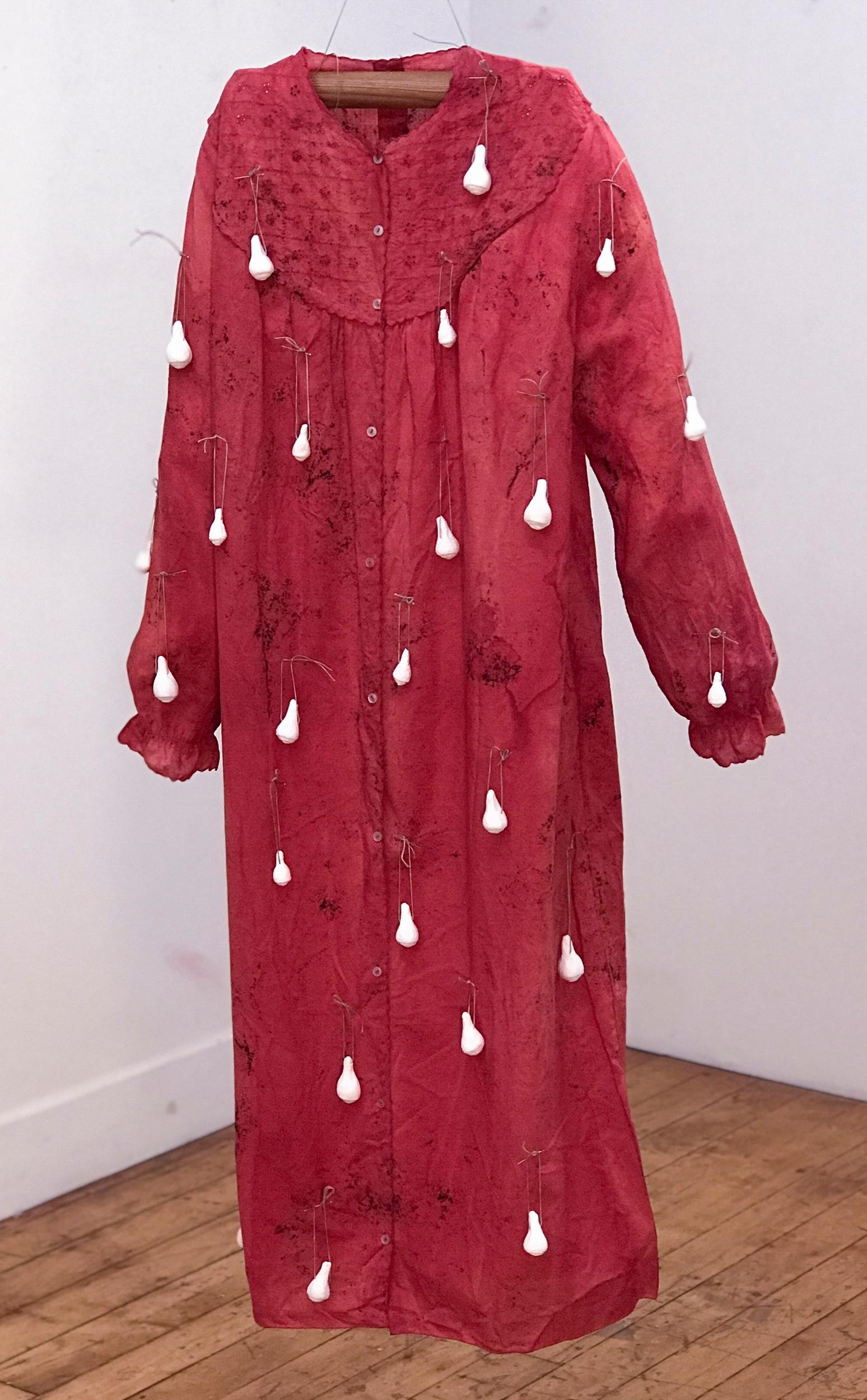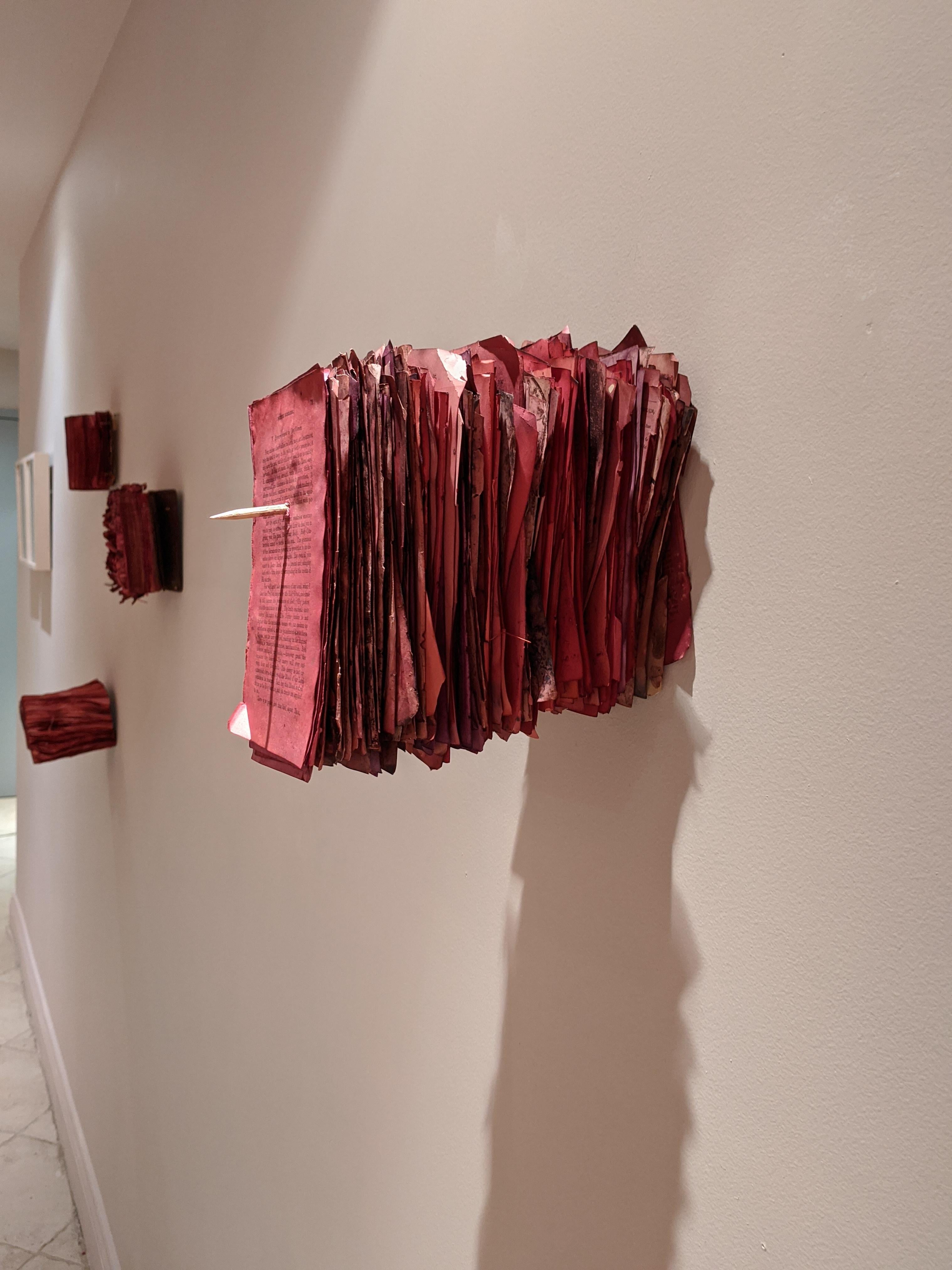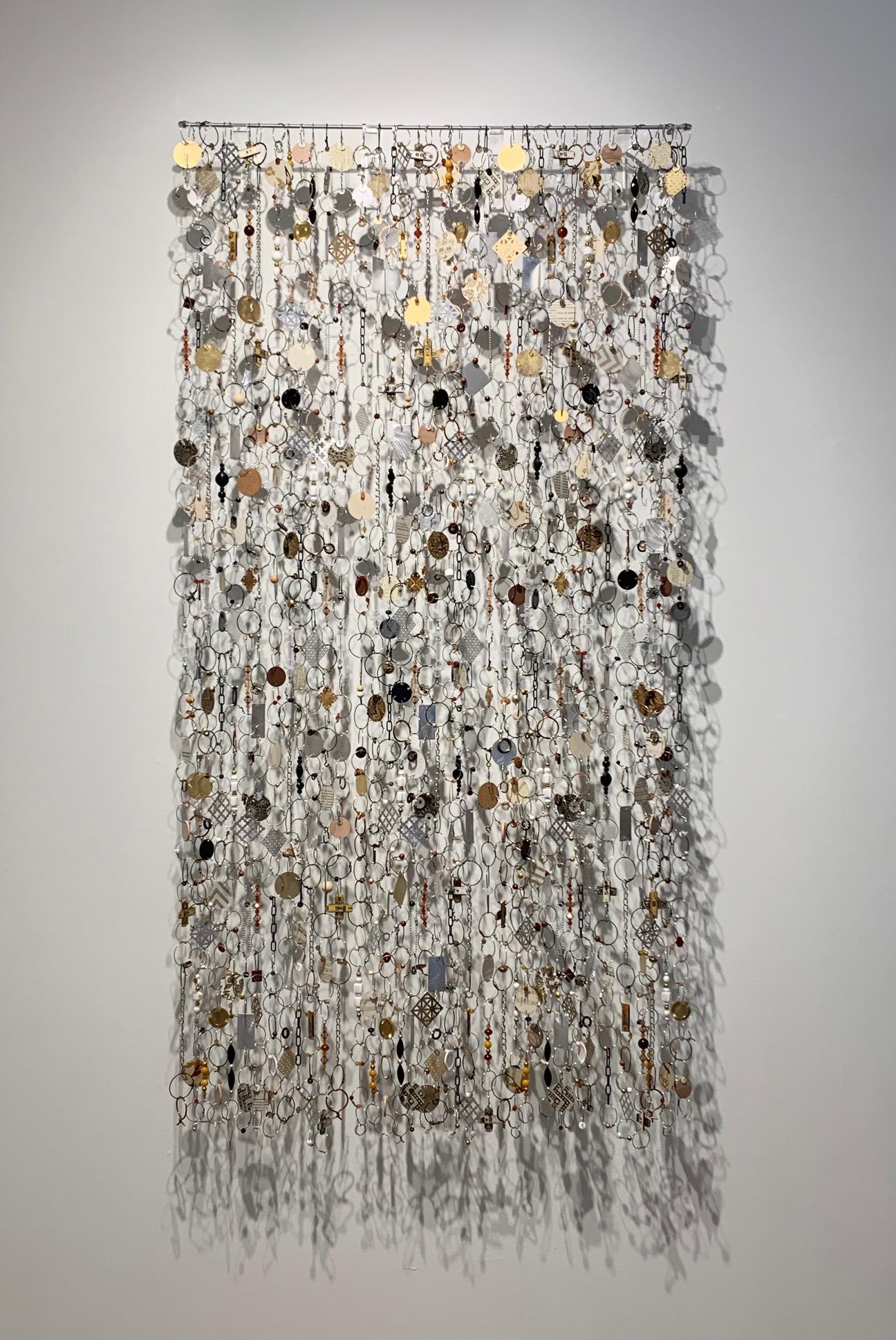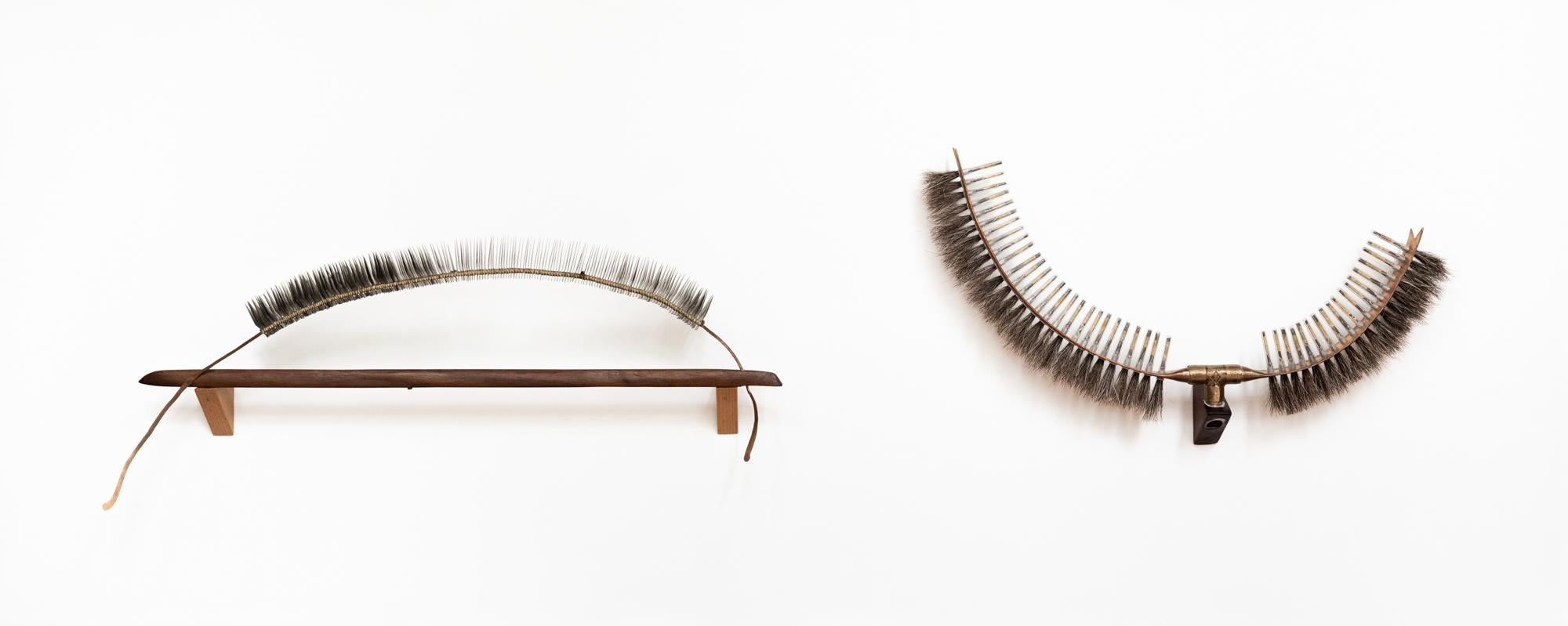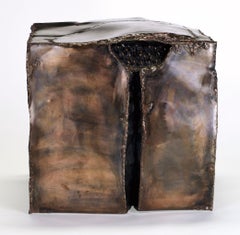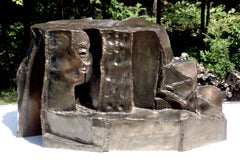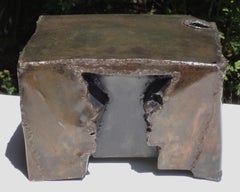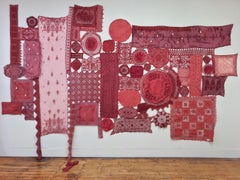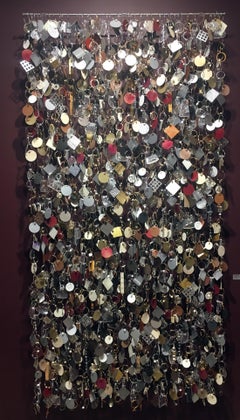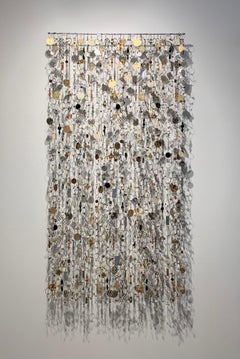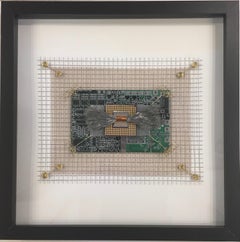
Anne Marie Kenny, Integrated Circuit Microchip Industrial Square, 2019
Want more images or videos?
Request additional images or videos from the seller
1 of 4
Anne Marie KennyAnne Marie Kenny, Integrated Circuit Microchip Industrial Square, 20192019
2019
$1,750List Price
About the Item
- Creator:Anne Marie Kenny
- Creation Year:2019
- Dimensions:Height: 13 in (33.02 cm)Width: 13 in (33.02 cm)Depth: 1 in (2.54 cm)
- Medium:
- Movement & Style:
- Period:
- Condition:
- Gallery Location:Darien, CT
- Reference Number:1stDibs: LU17225324912
About the Seller
5.0
Vetted Professional Seller
Every seller passes strict standards for authenticity and reliability
Established in 2014
1stDibs seller since 2015
143 sales on 1stDibs
Typical response time: 6 hours
Authenticity Guarantee
In the unlikely event there’s an issue with an item’s authenticity, contact us within 1 year for a full refund. DetailsMoney-Back Guarantee
If your item is not as described, is damaged in transit, or does not arrive, contact us within 7 days for a full refund. Details24-Hour Cancellation
You have a 24-hour grace period in which to reconsider your purchase, with no questions asked.Vetted Professional Sellers
Our world-class sellers must adhere to strict standards for service and quality, maintaining the integrity of our listings.Price-Match Guarantee
If you find that a seller listed the same item for a lower price elsewhere, we’ll match it.Trusted Global Delivery
Our best-in-class carrier network provides specialized shipping options worldwide, including custom delivery.More From This Seller
View AllSuzanne Benton, 1974, Pelvic Woman, Copper, Coated Steel
By Suzanne Benton
Located in Darien, CT
In 1972, the women’s movement was in full flower. Suzanne Benton had been an early activist, a founder and organizer of NOW Chapters, CT Feminists in the Arts, Women, Metamorphosis 1 (in New Haven, CT, the first women’s art festival in the USA). She'd already been creating metal sculpted masks and working with them in mask tale performances of Women of Myth and Heritage. Her inaugural performance of Sarah and Hagar n 1972 took place at Lincoln Center in NYC.
Benton then became the artistic director and producer of an evening on Broadway, Four Chosen Women (performers included herself as mask tale performer, author Anais Nin, actress Vinie Burroughs and dancer Joan Stone). The evening took place at the Edison Theatre, November 22, 1972. While developing the evening on Broadway, Benton met renowned Swedish actress and Hollywood star, Viveca Lindfors.
Viveca was then working on her solo performance, I AM A WOMAN, and was looking for a unique theatre set for the show. The happenstance that brought Viveca and Suzanne together. At that same time, recent travel to Macchu Picchu inspired her with the mountain’s great stones sitting on the edge of precipices. These vast stones led her to create welded steel Seated Sculpture Works. Viveca was intrigued by the concept and let her own imagination fly. Imagining a set of welded steel sculpture, she took the leap in commissioning Suzanne with complete faith in artist's ability to fulfill her mandate. Benton created groups of welded sculptures for two theater sets.
Protection is one of three sculptures in first set created in 1973. Mother and Child, Pelvic Woman, Facing Each Other are three of five works from the 1974 second set. The first toured with her shows throughout the East Coast and into Toronto, Canada. The second set, created to nest together could travel as checked baggage for international and domestic airline travel. They flew to Denmark in 1980 for her performance at the UN sponsored 1980 Women’s International Conference, Copenhagen.
In addition to creating the theatre sets, Benton mounted exhibitions of her masks and sculptures in the lobbies of theatres where she performed (NYC and Northampton). Continuing on with this theme, Becoming is her 1975 Seated Sculpture Work. The theatre sets were returned at the final end of its long run. These Seated Sculpture Works have often been featured in exhibitions, including both the 2003 and 2005 retrospectives. They are part of an oeuvre of 797 sculptures and masks.
What attracted her to welded sculpture? This excerpt from her book, The Art of Welded Sculpture, Van Nostrand Reinhold, 1975 speaks of its lure:
"Early in my life, when I had decided to become an artist, I had had an inner vision of being able to hold the physical material of my art in such a way as to bring it into existence with my hands. In welding, I wear a mask, a heavy apron, and gloves. I heat the metal and make it bend so smoothly and gracefully; I cut the metal, rigid metal, into endless shapes; I join the pieces by causing them to flow together with the heat of the flame. Welding was a return to my adolescent vision. It was fulfillment. At that beginning time I felt that even if I went no further, this experience in itself gave me astounding satisfaction. It was as thrilling as the moment of birth. It was my birth."
(Pelvic Woman and Protection are illustrated in the book):
What began in 1965 became by 2017 an oeuvre of 797 sculptures and masks. The magic of the welding mask...
Category
1970s Feminist Abstract Sculptures
Materials
Copper, Steel
Suzanne Benton, Becoming, 1975, Copper, Coated Steel
By Suzanne Benton
Located in Darien, CT
In 1972, the women’s movement was in full flower. Suzanne Benton had been an early activist, a founder and organizer of NOW Chapters, CT Feminists in the Arts, Women, Metamorphosis 1 (in New Haven, CT, the first women’s art festival in the USA). She'd already been creating metal sculpted masks and working with them in mask tale performances of Women of Myth and Heritage. Her inaugural performance of Sarah and Hagar n 1972 took place at Lincoln Center in NYC.
Benton then became the artistic director and producer of an evening on Broadway, Four Chosen Women (performers included herself as mask tale performer, author Anais Nin, actress Vinie Burroughs and dancer Joan Stone). The evening took place at the Edison Theatre, November 22, 1972. While developing the evening on Broadway, Benton met renowned Swedish actress and Hollywood star, Viveca Lindfors.
Viveca was then working on her solo performance, I AM A WOMAN, and was looking for a unique theatre set for the show. The happenstance that brought Viveca and Suzanne together. At that same time, recent travel to Macchu Picchu inspired her with the mountain’s great stones sitting on the edge of precipices. These vast stones led her to create welded steel Seated Sculpture Works. Viveca was intrigued by the concept and let her own imagination fly. Imagining a set of welded steel sculpture, she took the leap in commissioning Suzanne with complete faith in artist's ability to fulfill her mandate. Benton created groups of welded sculptures for two theater sets.
Protection is one of three sculptures in first set created in 1973. Mother and Child, Pelvic Woman, Facing Each Other are three of five works from the 1974 second set. The first toured with her shows throughout the East Coast and into Toronto, Canada. The second set, created to nest together could travel as checked baggage for international and domestic airline travel. They flew to Denmark in 1980 for her performance at the UN sponsored 1980 Women’s International Conference, Copenhagen.
In addition to creating the theatre sets, Benton mounted exhibitions of her masks and sculptures in the lobbies of theatres where she performed (NYC and Northampton). Continuing on with this theme, Becoming is her 1975 Seated Sculpture Work. The theatre sets were returned at the final end of its long run. These Seated Sculpture Works have often been featured in exhibitions, including both the 2003 and 2005 retrospectives. They are part of an oeuvre of 797 sculptures and masks.
What attracted her to welded sculpture? This excerpt from her book, The Art of Welded Sculpture, Van Nostrand Reinhold, 1975 speaks of its lure:
"Early in my life, when I had decided to become an artist, I had had an inner vision of being able to hold the physical material of my art in such a way as to bring it into existence with my hands. In welding, I wear a mask, a heavy apron, and gloves. I heat the metal and make it bend so smoothly and gracefully; I cut the metal, rigid metal, into endless shapes; I join the pieces by causing them to flow together with the heat of the flame. Welding was a return to my adolescent vision. It was fulfillment. At that beginning time I felt that even if I went no further, this experience in itself gave me astounding satisfaction. It was as thrilling as the moment of birth. It was my birth."
(Pelvic Woman and Protection are illustrated in the book):
What began in 1965 became by 2017 an oeuvre of 797 sculptures and masks. The magic of the welding mask...
Category
1970s Feminist Abstract Sculptures
Materials
Copper, Steel
Suzanne Benton, Facing Each Other, 1974, Copper, Coated Steel
By Suzanne Benton
Located in Darien, CT
In 1972, the women’s movement was in full flower. Suzanne Benton had been an early activist, a founder and organizer of NOW Chapters, CT Feminists in the Arts, Women, Metamorphosis 1 (in New Haven, CT, the first women’s art festival in the USA). She'd already been creating metal sculpted masks and working with them in mask tale performances of Women of Myth and Heritage. Her inaugural performance of Sarah and Hagar n 1972 took place at Lincoln Center in NYC.
Benton then became the artistic director and producer of an evening on Broadway, Four Chosen Women (performers included herself as mask tale performer, author Anais Nin, actress Vinie Burroughs and dancer Joan Stone). The evening took place at the Edison Theatre, November 22, 1972. While developing the evening on Broadway, Benton met renowned Swedish actress and Hollywood star, Viveca Lindfors.
Viveca was then working on her solo performance, I AM A WOMAN, and was looking for a unique theatre set for the show. The happenstance that brought Viveca and Suzanne together. At that same time, recent travel to Macchu Picchu inspired her with the mountain’s great stones sitting on the edge of precipices. These vast stones led her to create welded steel Seated Sculpture Works. Viveca was intrigued by the concept and let her own imagination fly. Imagining a set of welded steel sculpture, she took the leap in commissioning Suzanne with complete faith in artist's ability to fulfill her mandate. Benton created groups of welded sculptures for two theater sets.
Protection is one of three sculptures in first set created in 1973. Mother and Child, Pelvic Woman, Facing Each Other are three of five works from the 1974 second set. The first toured with her shows throughout the East Coast and into Toronto, Canada. The second set, created to nest together could travel as checked baggage for international and domestic airline travel. They flew to Denmark in 1980 for her performance at the UN sponsored 1980 Women’s International Conference, Copenhagen.
In addition to creating the theatre sets, Benton mounted exhibitions of her masks and sculptures in the lobbies of theatres where she performed (NYC and Northampton). Continuing on with this theme, Becoming is her 1975 Seated Sculpture Work. The theatre sets were returned at the final end of its long run. These Seated Sculpture Works have often been featured in exhibitions, including both the 2003 and 2005 retrospectives. They are part of an oeuvre of 797 sculptures and masks.
What attracted her to welded sculpture? This excerpt from her book, The Art of Welded Sculpture, Van Nostrand Reinhold, 1975 speaks of its lure:
"Early in my life, when I had decided to become an artist, I had had an inner vision of being able to hold the physical material of my art in such a way as to bring it into existence with my hands. In welding, I wear a mask, a heavy apron, and gloves. I heat the metal and make it bend so smoothly and gracefully; I cut the metal, rigid metal, into endless shapes; I join the pieces by causing them to flow together with the heat of the flame. Welding was a return to my adolescent vision. It was fulfillment. At that beginning time I felt that even if I went no further, this experience in itself gave me astounding satisfaction. It was as thrilling as the moment of birth. It was my birth."
(Pelvic Woman and Protection are illustrated in the book):
What began in 1965 became by 2017 an oeuvre of 797 sculptures and masks. The magic of the welding mask...
Category
1970s Feminist Abstract Sculptures
Materials
Copper, Steel
Patricia Miranda, Lamentations for Rebecca; 2020, lace, cochineal dye, thread
By Patricia Miranda
Located in Darien, CT
Patricia Miranda's work includes interdisciplinary installation, textile, paper and books. The textiles incorporated in these new pieces are vintage linens from her Italian and Irish grandmothers and sourced from friends and strangers around the country. Each donation is documented and integrated into the work. Textile as a form that wraps the body from cradle to grave. The role of lacemaking in the lives of women both economically and historically is packed with metaphorical potential. The relationship of craft and women’s work (re)appropriated by artists today to environmental and social issues is integral to the artist's research.
Her work is process oriented; materials are submerged in natural dyes from oak gall wasp nests, cochineal insects, turmeric, indigo, and clay. She forages for raw materials, cook dyes, grind pigments, ecofeminist actions that consider environmental impacts of objects. The process is left visible as dyestuff is unfiltered in the vat and finished work. Sewn into larger works, Miranda incorporates hair, pearls, bone beads, Milagros, cast plaster. The distinct genetics and environmental and cultural history of each material asserts its voice as collaborator rather than medium.
The lace inserts a visceral femininity into the pristine gallery, and exerts a ghostly trace of the history of domestic labor. The combination of earth and lace references human and environmental devastation and the conflation of nature and women’s bodies as justifications for exploitation. Mournful and solastalgic, they are lamentations to the violence against women and the earth.
Patricia Miranda is an interdisciplinary artist, curator, educator, and founder of The Crit Lab, graduate-level critique seminars and Residency for artists, and MAPSpace project space. She has been Visiting Artist at Vermont Studio Center, the Heckscher Museum, and University of Utah; and been awarded residencies at I-Park, Weir Farm, Vermont Studio Center, and Julio Valdez Printmaking Studio.
She received an Anonymous Was a Woman Covid19 Artist Relief Grant, an artist grant from ArtsWestchester/New York State Council on the Arts, and was part of a year-long NEA grant working with homeless youth.
Miranda currently teaches graduate curatorial studies at Western Colorado University, and develops programs for K-12, museums, and institutions such as Franklin Furnace.
Her work has been exhibited at ODETTA, NYC; ABC No Rio, NYC; Alexey von...
Category
2010s Feminist Abstract Sculptures
Materials
Ceramic, Fabric, Thread, Dye, Found Objects
Patricia Miranda, Lamentations for Ermenegilda; 2020, lace, cochineal dye, thread
By Patricia Miranda
Located in Darien, CT
Patricia Miranda's work includes interdisciplinary installation, textile, paper and books. The textiles incorporated in these new pieces are vintage linens from her Italian and Irish grandmothers and sourced from friends and strangers around the country. Each donation is documented and integrated into the work. Textile as a form that wraps the body from cradle to grave. The role of lacemaking in the lives of women both economically and historically is packed with metaphorical potential. The relationship of craft and women’s work (re)appropriated by artists today to environmental and social issues is integral to the artist's research.
Her work is process oriented; materials are submerged in natural dyes from oak gall wasp nests, cochineal insects, turmeric, indigo, and clay. She forages for raw materials, cook dyes, grind pigments, ecofeminist actions that consider environmental impacts of objects. The process is left visible as dyestuff is unfiltered in the vat and finished work. Sewn into larger works, Miranda incorporates hair, pearls, bone beads, Milagros, cast plaster. The distinct genetics and environmental and cultural history of each material asserts its voice as collaborator rather than medium.
The lace inserts a visceral femininity into the pristine gallery, and exerts a ghostly trace of the history of domestic labor. The combination of earth and lace references human and environmental devastation and the conflation of nature and women’s bodies as justifications for exploitation. Mournful and solastalgic, they are lamentations to the violence against women and the earth.
Patricia Miranda is an interdisciplinary artist, curator, educator, and founder of The Crit Lab, graduate-level critique seminars and Residency for artists, and MAPSpace project space. She has been Visiting Artist at Vermont Studio Center, the Heckscher Museum, and University of Utah; and been awarded residencies at I-Park, Weir Farm, Vermont Studio Center, and Julio Valdez Printmaking Studio.
She received an Anonymous Was a Woman Covid19 Artist Relief Grant, an artist grant from ArtsWestchester/New York State Council on the Arts, and was part of a year-long NEA grant working with homeless youth.
Miranda currently teaches graduate curatorial studies at Western Colorado University, and develops programs for K-12, museums, and institutions such as Franklin Furnace.
Her work has been exhibited at ODETTA, NYC; ABC No Rio, NYC; Alexey von...
Category
2010s Feminist Abstract Sculptures
Materials
Ceramic, Fabric, Thread, Dye, Found Objects
Patricia Miranda, Florilegium Series, 2016, cochineal dyes, antique books, pearl
By Patricia Miranda
Located in Darien, CT
Patricia Miranda's work includes interdisciplinary installation, textile, paper and books. The textiles incorporated in these new pieces are vintage linens from her Italian and Irish grandmothers and sourced from friends and strangers around the country. Each donation is documented and integrated into the work. Textile as a form that wraps the body from cradle to grave. The role of lacemaking in the lives of women both economically and historically is packed with metaphorical potential. The relationship of craft and women’s work (re)appropriated by artists today to environmental and social issues is integral to the artist's research.
Her work is process oriented; materials are submerged in natural dyes from oak gall wasp nests, cochineal insects, turmeric, indigo, and clay. She forages for raw materials, cook dyes, grind pigments, ecofeminist actions that consider environmental impacts of objects. The process is left visible as dyestuff is unfiltered in the vat and finished work. Sewn into larger works, Miranda incorporates hair, pearls, bone beads, Milagros, cast plaster. The distinct genetics and environmental and cultural history of each material asserts its voice as collaborator rather than medium.
The lace inserts a visceral femininity into the pristine gallery, and exerts a ghostly trace of the history of domestic labor. The combination of earth and lace references human and environmental devastation and the conflation of nature and women’s bodies as justifications for exploitation. Mournful and solastalgic, they are lamentations to the violence against women and the earth.
Patricia Miranda is an interdisciplinary artist, curator, educator, and founder of The Crit Lab, graduate-level critique seminars and Residency for artists, and MAPSpace project space. She has been Visiting Artist at Vermont Studio Center, the Heckscher Museum, and University of Utah; and been awarded residencies at I-Park, Weir Farm, Vermont Studio Center, and Julio Valdez Printmaking Studio.
She received an Anonymous Was a Woman Covid19 Artist Relief Grant, an artist grant from ArtsWestchester/New York State Council on the Arts, and was part of a year-long NEA grant working with homeless youth.
Miranda currently teaches graduate curatorial studies at Western Colorado University, and develops programs for K-12, museums, and institutions such as Franklin Furnace.
Her work has been exhibited at ODETTA, NYC; ABC No Rio, NYC; Alexey von...
Category
2010s Feminist Abstract Sculptures
Materials
Fabric, Thread, Plaster, Dye, Found Objects
You May Also Like
"October Shimmer", Mixed Media Wall Sculpture, Tapestry, Metallic, Found Objects
By John Garrett
Located in St. Louis, MO
John Garrett was raised in southern New Mexico by parents who were both educators. They instilled in him an appreciation for the handmade with their collections of Native American a...
Category
2010s Contemporary Mixed Media
Materials
Brass, Copper, Steel, Wire
Trinket Net No. 3, John Garrett, 2023, Wall Hanging Installation Sculpture
By John Garrett
Located in St. Louis, MO
John Garrett was raised in southern New Mexico by parents who were both educators. They instilled in him an appreciation for the handmade with their collections of Native American a...
Category
2010s Contemporary Sculptures
Materials
Metal, Brass, Copper, Steel
Diptych: Quiver & Multi-Cut Tool
By Katie VanVliet
Located in Philadelphia, PA
This piece titled "Diptych: Quiver & Multi-Cut Tool" is an original artwork made from Mixed media: #11 steel blades, sinew, copper, and hardwoods (Multi-Cut Tool). Horsehair, plastic vials, sinew, copper, brass, hardwoods (Quiver) by Katie VanVliet. This piece measures 24"h x 60"w x 7"d.
Katie VanVliet (she/her) is a sculptor and printmaker practicing from her home studio in Elkins Park...
Category
21st Century and Contemporary Contemporary Still-life Sculptures
Materials
Brass, Copper, Steel
Butterfly Girl
By Eric Rhein
Located in New York, NY
Eric Rhein “Butterfly Girl”
1992-1995
Accompanied by a certificate of authenticity
Steel, brass, and gold-filled wire, thread, glue, and found object...
Category
1990s Contemporary Sculptures
Materials
Brass, Steel, Wire
Tempest
Located in New York, NY
Stainless Steel TIG Welding Rod, Aluminum, Fishing Accessories, Wire, Paint
Jeremy Bullis after David L. Bullis
Category
2010s Abstract Geometric Abstract Sculptures
Materials
Steel, Wire
Tempest
Located in New York, NY
Stainless Steel TIG Welding Rod, Aluminum, Fishing Accessories, Wire, Paint
Jeremy Bullis after David L. Bullis
Edition 1/5
Category
2010s Abstract Geometric Abstract Sculptures
Materials
Steel, Wire
